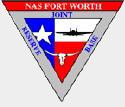Hobby Master HA4601 RAF Lockheed-Martin F-35B Lightning II Joint Strike Fighter - ZM137, Edwards AFB, California, 2013 [Low-Vis Scheme] (1:72 Scale)
"The F-35 program executive officer, has stated that the 'F-35 enjoys a significant Combat Loss Exchange Ratio advantage over the current and future air-to-air threats, to include Sukhois, which are currently being flown by the Russian, Indian, and Chinese Air Forces.'"
- Maj Gen Charles R. Davis, USAF, the F-35 program executive officer
 The Lockheed Martin F-35 Lightning II is a fifth-generation, single-seat, single-engine, stealth-capable military strike fighter, a multirole aircraft that can perform close air support, tactical bombing, and air superiority fighter missions. The F-35 has three different models; one is the conventional takeoff and landing variant, the second is short takeoff and vertical-landing variant, and the third is a carrier-based variant.
The Lockheed Martin F-35 Lightning II is a fifth-generation, single-seat, single-engine, stealth-capable military strike fighter, a multirole aircraft that can perform close air support, tactical bombing, and air superiority fighter missions. The F-35 has three different models; one is the conventional takeoff and landing variant, the second is short takeoff and vertical-landing variant, and the third is a carrier-based variant.
The F-35 is descended from the X-35, the product of the Joint Strike Fighter (JSF) program. Its development is being principally funded by the United States, with the United Kingdom, and other partner governments providing additional funding. It is being designed and built by an aerospace industry team led by Lockheed Martin with Northrop Grumman and BAE Systems as major partners. Demonstrator aircraft flew in 2000, with the first flight on December 15th, 2006.
The F-35B Lightning II is the Marine Corps variant of the Joint Strike Fighter and features a vertical lift fan and pivoting engine nozzle to deliver vertical landing and short takeoff capability to expeditionary airfields. The F-35 will replace AV-8B Harrier IIs in the Marine Corps inventory.
Designed to operate from austere bases and a range of air-capable ships with its short takeoff/vertical landing capability, the F-35B can also takeoff and land conventionally from longer runways on major bases. F-35B aircraft have been delivered to the U.S. Marines and the U.K., whose forces are training together at the Integrated Training Center at Eglin Air Force Base. STOVL aircraft are also stationed at the first operational F-35 base, Marine Corps Air Station Yuma, Ariz., and are completing flight test at Naval Air Station Patuxent River, Md. The Italian Air Force will also operate the B-variant. The F-35B has a Lift Fan just behind the cockpit and an engine that can swivel 90 degrees when in short takeoff/vertical landing mode. Because of the Lift Fan, the STOVL variant has smaller internal weapon bay and less internal fuel capacity than the F-35A. It uses the probe and drogue method of aerial refueling.
Pictured here is a 1:72 scale replica of a Royal Air Force Lockheed-Martin F-35B Lightning II Joint Strike Fighter that under went testing at Edwards AFB, California.
Sold Out!
Dimensions:
Wingspan: 5-3/4-inches
Length: 8-1/2-inches
Release Date: October 2015
 Historical Account: "Lightning II" - The Lockheed Martin F-35 Joint Strike Fighter will be known in UK service as the Lightning II. Lockheed Martin is the prime contractor but the UK is the only Level 1 partner with the US. A number of British companies, including BAE Systems and Rolls-Royce will have significant industrial work-share in construction and development of the aircraft. The Lightning II will provide UK Defence with a 5th Generation (low observable, supersonic, enhanced data fusion), multi-role, all weather, day and night aircraft that will have the ability to operate from land bases as well as the Queen Elizabeth Class carriers, the first of which is due to accept Lightning II onto her deck in 2018. This basing flexibility will give UK Defence a truly joint expeditionary Combat Air capability well into the 2030s. The RAF is the lead service for the operation of Lightning II and, like the Harrier before, the Joint Lightning II Force will be manned by both RAF and RN personnel.
Historical Account: "Lightning II" - The Lockheed Martin F-35 Joint Strike Fighter will be known in UK service as the Lightning II. Lockheed Martin is the prime contractor but the UK is the only Level 1 partner with the US. A number of British companies, including BAE Systems and Rolls-Royce will have significant industrial work-share in construction and development of the aircraft. The Lightning II will provide UK Defence with a 5th Generation (low observable, supersonic, enhanced data fusion), multi-role, all weather, day and night aircraft that will have the ability to operate from land bases as well as the Queen Elizabeth Class carriers, the first of which is due to accept Lightning II onto her deck in 2018. This basing flexibility will give UK Defence a truly joint expeditionary Combat Air capability well into the 2030s. The RAF is the lead service for the operation of Lightning II and, like the Harrier before, the Joint Lightning II Force will be manned by both RAF and RN personnel.
Lightning II has been designed from the outset to carry out a wide range of mission types, able to use its very low observable characteristics to penetrate Integrated Air Defence Systems and strike a number of types of targets. In a permissive environment, Lightning II is able to carry weapons on external pylons, as well as in the internal weapon bays. This will allow a maximum weapon payload of 6 Paveway IV, 2 AIM-120C AMRAAM, 2 AIM-132 ASRAAM and a missionized 25mm gun pod.
The Lightning II design applies stealth technology manufacturing techniques and, to minimize its radar signature, the air frame has identical sweep angles for the leading and trailing edges of the wings and tail, and incorporates sloping sides for the fuselage and the canopy.





![USN Lockheed-Martin F-35B Lightning II Joint Strike Fighter - BF-05, Cdr. Nathan Gray, VX-23 "Salty Dogs", HMS Queen Elizabeth (R08), 2018 [Low-Vis Scheme] (1:72 Scale)](http://cdn4.volusion.store/qh9e9-jdqv9/v/vspfiles/photos/HA4608-1.jpg?v-cache=1737345390)
